6 books about Painting, Dutch
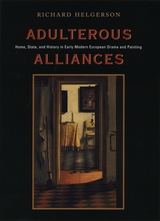
Adulterous Alliances
Home, State, and History in Early Modern European Drama and Painting
Richard Helgerson
University of Chicago Press, 2000
Shakespeare, Vermeer, Lope de Vega, Molière, and Diderot dont usually keep company with one another. But in this acclaimed book, Richard Helgerson shows that each contributed to a common project of great significance: the artistic promotion of the middle-class home. In a study that stretches over two centuries, Helgerson looks beneath European drama and painting to reveal an unexpected prehistory of modern domesticity.
[more]
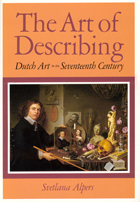
The Art of Describing
Dutch Art in the Seventeenth Century
Svetlana Alpers
University of Chicago Press, 1983
"The art historian after Erwin Panofsky and Ernst Gombrich is not only participating in an activity of great intellectual excitement; he is raising and exploring issues which lie very much at the centre of psychology, of the sciences and of history itself. Svetlana Alpers's study of 17th-century Dutch painting is a splendid example of this excitement and of the centrality of art history among current disciples. Professor Alpers puts forward a vividly argued thesis. There is, she says, a truly fundamental dichotomy between the art of the Italian Renaissance and that of the Dutch masters. . . . Italian art is the primary expression of a 'textual culture,' this is to say of a culture which seeks emblematic, allegorical or philosophical meanings in a serious painting. Alberti, Vasari and the many other theoreticians of the Italian Renaissance teach us to 'read' a painting, and to read it in depth so as to elicit and construe its several levels of signification. The world of Dutch art, by the contrast, arises from and enacts a truly 'visual culture.' It serves and energises a system of values in which meaning is not 'read' but 'seen,' in which new knowledge is visually recorded."—George Steiner, Sunday Times
"There is no doubt that thanks to Alpers's highly original book the study of the Dutch masters of the seventeenth century will be thoroughly reformed and rejuvenated. . . . She herself has the verve, the knowledge, and the sensitivity to make us see familiar sights in a new light."—E. H. Gombrich, New York Review of Books
"There is no doubt that thanks to Alpers's highly original book the study of the Dutch masters of the seventeenth century will be thoroughly reformed and rejuvenated. . . . She herself has the verve, the knowledge, and the sensitivity to make us see familiar sights in a new light."—E. H. Gombrich, New York Review of Books
[more]
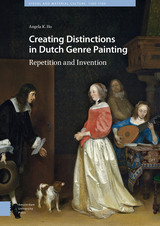
Creating Distinctions in Dutch Genre Painting
Repetition and Invention
Angela K. Ho
Amsterdam University Press, 2017
In the mid- to late seventeenth century, a number of Dutch painters created a new type of refined genre painting that was much admired by elite collectors. In this book, Angela Ho uses the examples of Gerrit Dou, Gerard ter Borch, and Frans van Mieris to show how this group of artists made creative use of repetition-such as crafting virtuosic, self-referential compositions around signature motifs, or engaging esteemed predecessors in a competitive dialogue through emulation-to project a distinctive artistic personality. The resulting paintings enabled purchasers and viewers to exercise their connoisseurial eye and claim membership in an exclusive circle of sophisticated enthusiasts-making creative repetition a successful strategy for both artists and viewers.
[more]
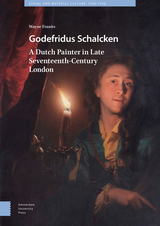
Godefridus Schalcken
A Dutch Painter in Late Seventeenth-Century London
Wayne Franits
Amsterdam University Press, 2018
In his own day, Godefridus Schalcken (1643—1706) was an internationally renowned Dutch painter, but little is known about the four years that he spent in London. Using newly discovered documents, this book provides the first comprehensive examination of Schalcken’s activities there. The author analyses Schalcken’s strategic appropriations of English styles, his attempts to exploit gapsin the art market, and his impact on tastes in London’s milieu. Five chapters survey his art during these years, concluding with acritical catalogue of all his London-period work.
[more]
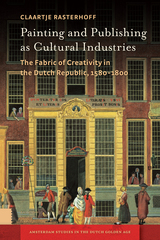
Painting and Publishing as Cultural Industries
The Fabric of Creativity in the Dutch Republic, 1580-1800
Claartje Rasterhoff
Amsterdam University Press, 2017
The Dutch Republic was a cultural powerhouse in the modern era, producing lasting masterpieces in painting and publishing, and in the process transforming those fields from modest trades to booming industries. This book asks the question of how such a small nation could become such a major player in those fields. Claartje Rasterhoff shows how industrial organisations played a role in shaping patterns of growth and innovations. As early modern Dutch cultural industries were concentrated geographically, highly networked, and institutionally embedded, they were able to reduce uncertainty in the marketplace and stimulate the commercial and creative potential of painters and publishers-though those successes eventually came up against the limits of a saturated domestic market and an aversion to risk on the part of producers that ultimately brought an end to the boom.
[more]
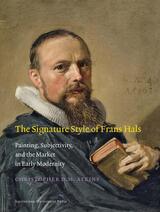
The Signature Style of Frans Hals
Painting, Subjectivity, and the Market in Early Modernity
Christopher D. M. Atkins
Amsterdam University Press, 2012
This richly illustrated study is the first consider the manifold functions and meanings of Hals’s distinctive handling of paint. Atkins explores the uniqueness of Hals’s approach to painting and the relationship of his manner to seventeenth-century aesthetics. He also investigates the economic motivations and advantages of his methods, the operation of the style as a personal and workshop brand, and the apparent modernity of the artist’s style. The book seeks to understand the multiple levels on which Hals’s consciously cultivated manner of painting operated for himself, his pupils and assistants, his clients, and succeeding generations of viewers. As a result, the book offers a wholly new understanding of one of the leading artists of the Dutch Golden Age, and one of the most formative painters in the history of art in the Western tradition. It also provides a much needed interrogation of the interrelationships of subjectivity, style, authorship, methods of artistic and commercial production, economic consumption, and art theory in early modernity.
[more]
READERS
Browse our collection.
PUBLISHERS
See BiblioVault's publisher services.
STUDENT SERVICES
Files for college accessibility offices.
UChicago Accessibility Resources
home | accessibility | search | about | contact us
BiblioVault ® 2001 - 2024
The University of Chicago Press









